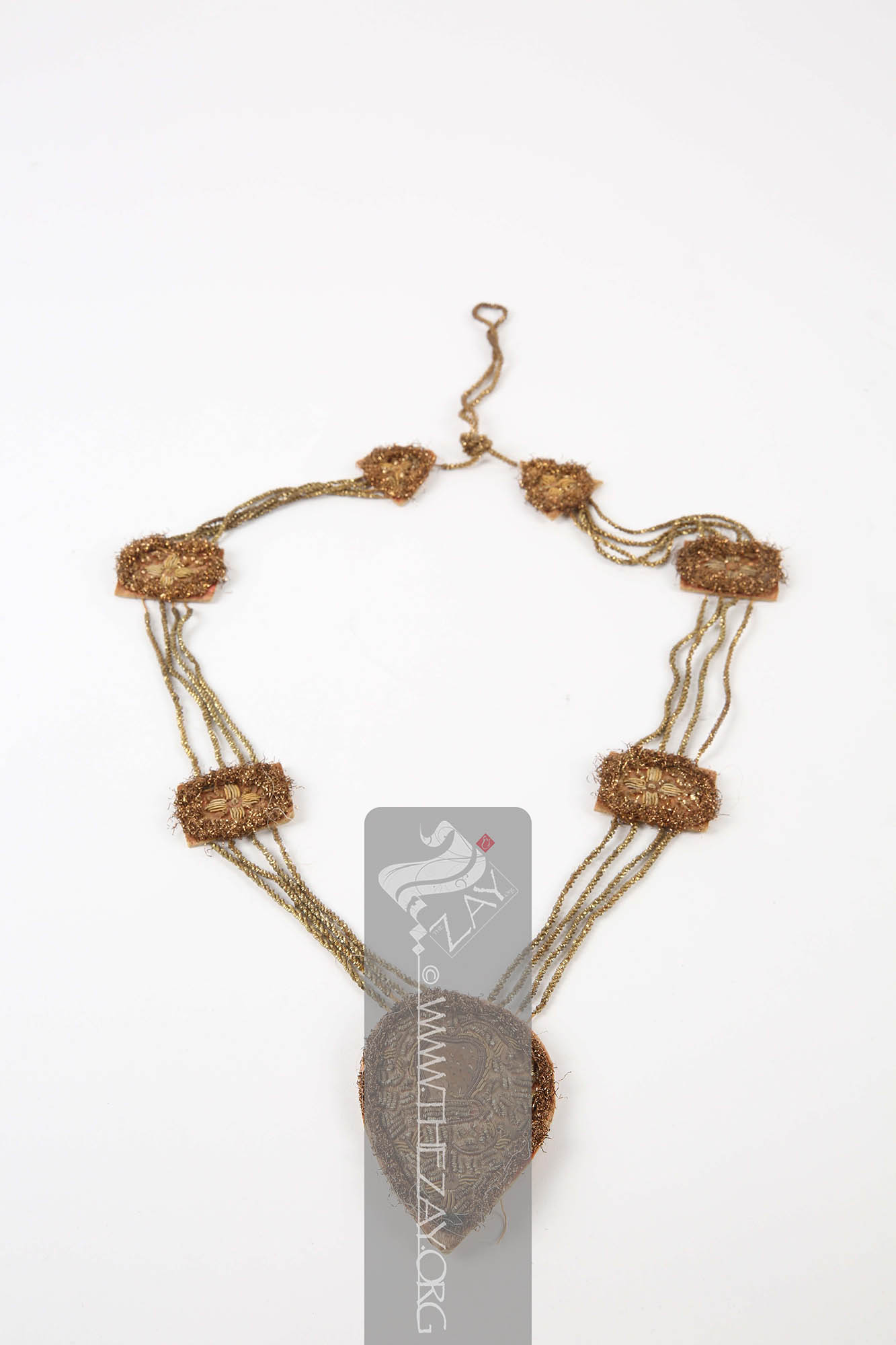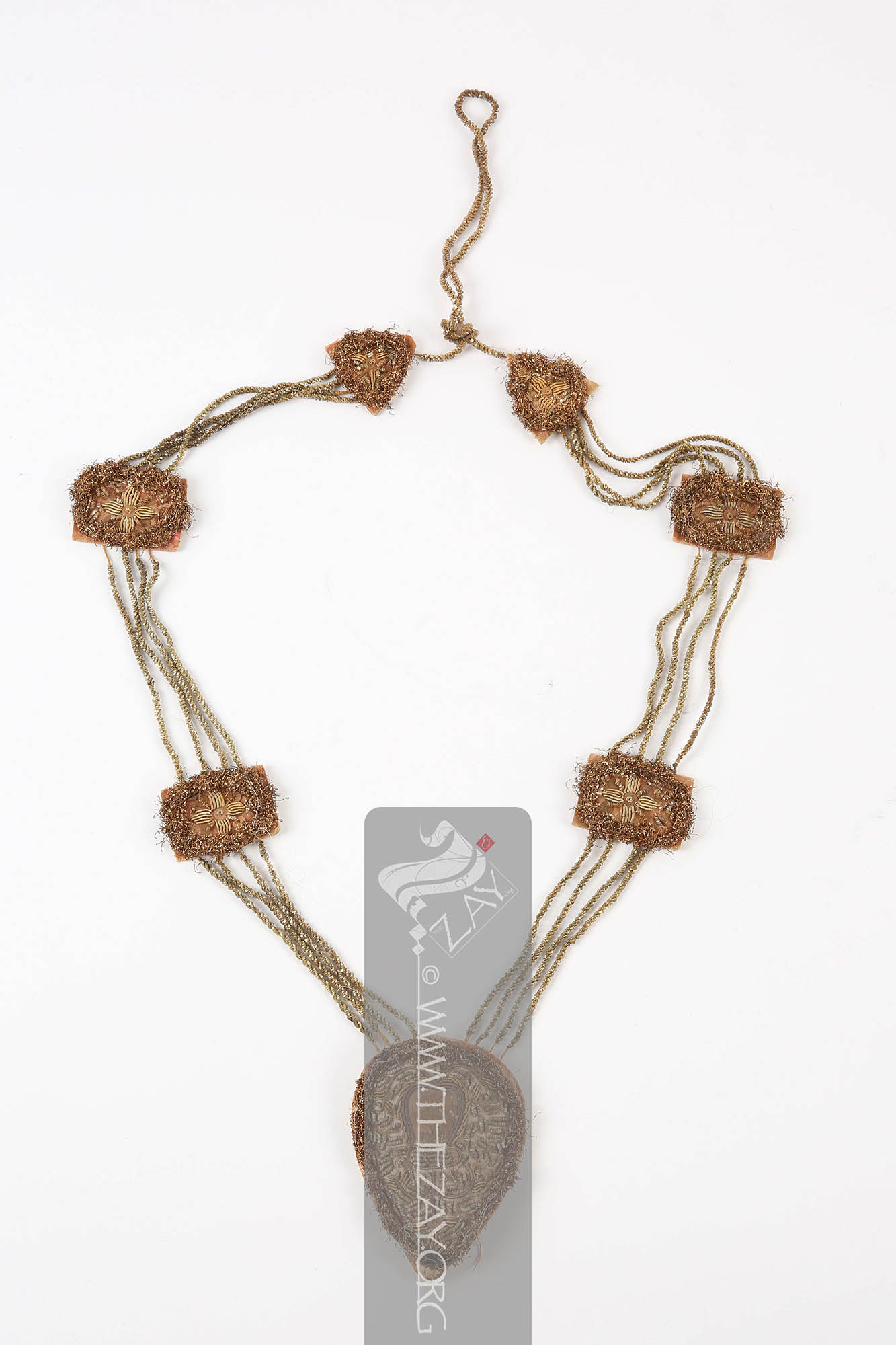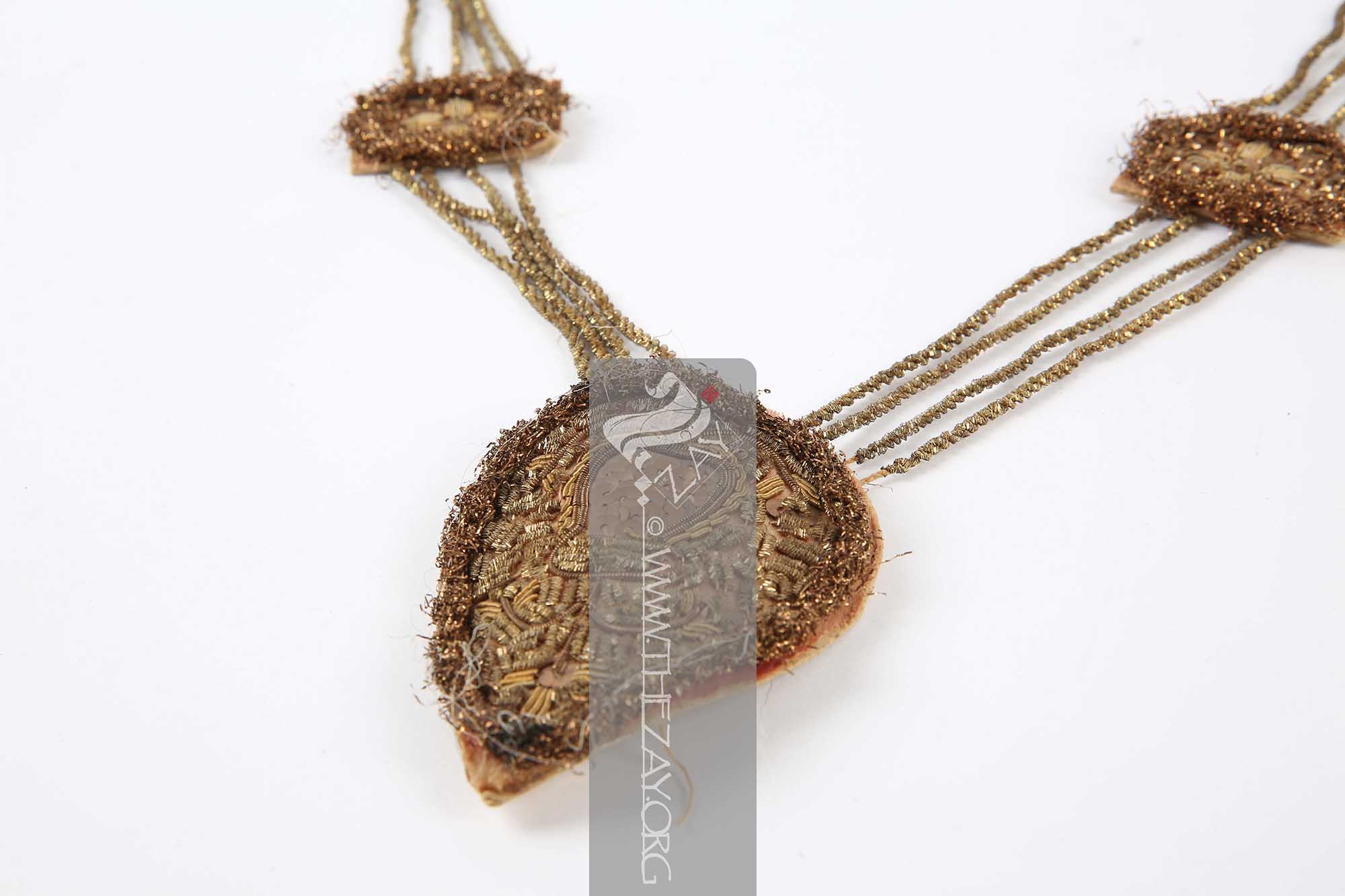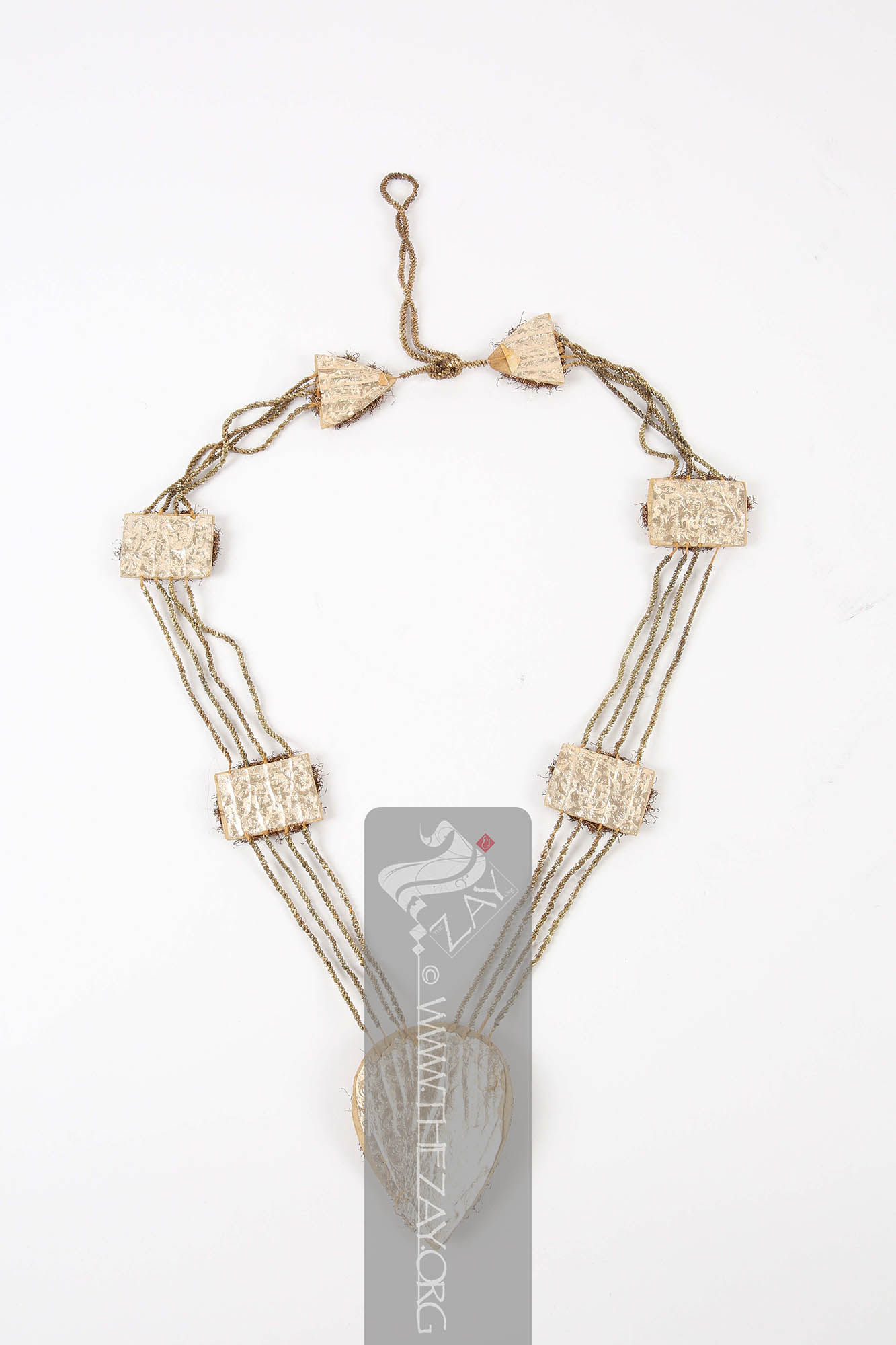Object NotePart of a lot purchased together which includes a woman’s ensemble –blouse, pair of trousers and a jacket (
ZI2020.500741 ASIA,
ZI2020.500741a ASIA,
ZI2020.500741b ASIA) and six other pieces not related to the ensemble (
ZI2020.500741c ASIA,
ZI2020.500741d ASIA,
ZI2020.500741e ASIA,
ZI2020.500741f ASIA,
ZI2020.500741g ASIA,
ZI2020.500741h ASIA).
Object HistoryThis man’s ceremonial garland was purchased by
Dr. Reem Tariq
Ṭariq: (Arabic; Synonym: tulle_bi_talli
Tūlle_bi_tallī: (French: Tulle – a city in France where fine material for veil was first made; Turkish: tel – wire; Synonym: tariq; talli; badla; khus_dozi ), series of small metal knots made on a woven net ground as embellishment. The term is commonly used in the North African Arab region specifically in Egypt.
; talli; badla; khus_dozi ), series of small metal knots made on a woven net ground as embellishment. The term is commonly used in the Levant Arab region specifically in Lebanon.
El Mutwalli
Dr. Reem Tariq
Ṭariq: (Arabic; Synonym: tulle_bi_talli
Tūlle_bi_tallī: (French: Tulle – a city in France where fine material for veil was first made; Turkish: tel – wire; Synonym: tariq; talli; badla; khus_dozi ), series of small metal knots made on a woven net ground as embellishment. The term is commonly used in the North African Arab region specifically in Egypt.
; talli; badla; khus_dozi ), series of small metal knots made on a woven net ground as embellishment. The term is commonly used in the Levant Arab region specifically in Lebanon.
el Mutwallī: Founder (CEO) of the Zay
Zay: (Arabic: costume, Pl. azyaā’), a set of clothes in a style typical of a particular country or historical period. Initiative, a public figure, speaker and author. An expert curator and consultant in Islamic art and architecture, interior design, historic costume, and UAE heritage. from Kerry Taylor Auctions, London in 2020 to be added to The
Zay
Zay: (Arabic: costume, Pl. azyaā’), a set of clothes in a style typical of a particular country or historical period. Initiative Collection.
Object Features This is a man’s ceremonial neck ornament or garland (
haar
Haar: (Hindustani), a long dangling ornamental neckpiece ranging from a proper jewellery like a necklace made of precious metal to a floral garland traditionally worn in the Indian subcontinent by both men and women. ) possibly for a Muslim groom. Made from gold and copper metal wire wrapped around cotton threads with copper sequins and gold and copper thread sewn over a silk fabric that is stuck to cardboard bases that have embossed silver foil-lined backs. The
haar
Haar: (Hindustani), a long dangling ornamental neckpiece ranging from a proper jewellery like a necklace made of precious metal to a floral garland traditionally worn in the Indian subcontinent by both men and women. features a main pendant and three tiers of attachments on either side.
Traditionally Muslim grooms and their companions in South Asia are often greeted with this kind of ornaments or garlands along with floral garlands by the bride’s family when they arrive at the bride’s house for the wedding. Never a part of the primary bridal jewellery, these kinds of ornaments are often bought in bulk for disposable usage.
This piece is possibly from the Sindh region of the subcontinent and judging from its embellishment and other accompanying articles it could have been part of a fairly affluent Muslim groom and his men’s wedding attire.
Links 






